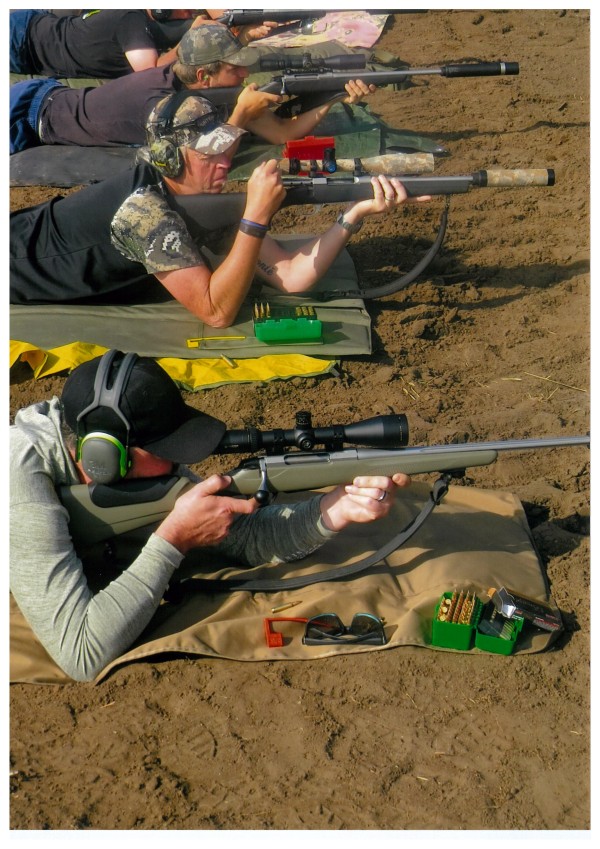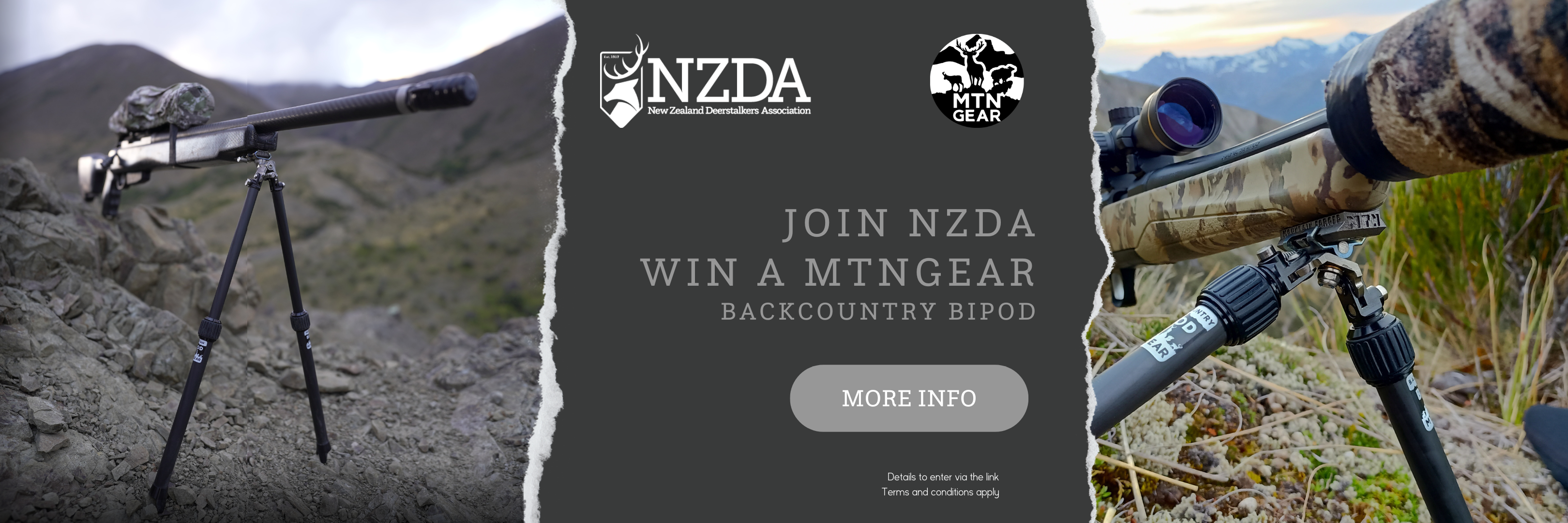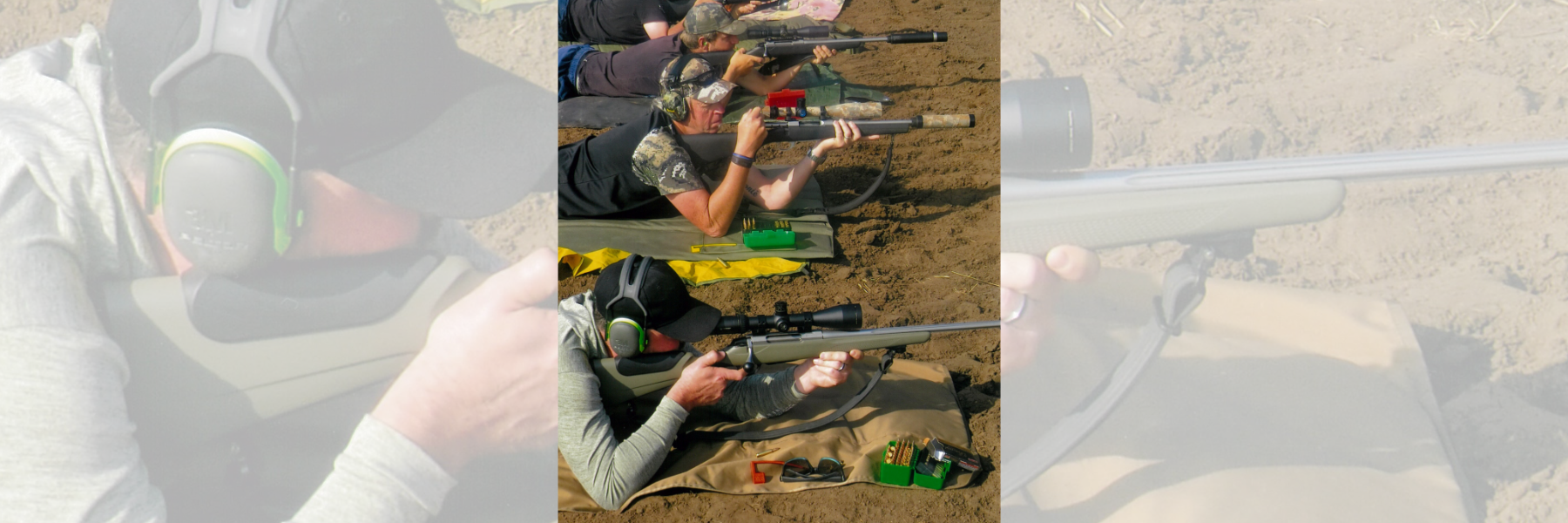Myths and Misconceptions: Firearms and Firearm Owners
9 November
Hunting and Wildlife Magazine - Issue 216 Autumn
Words by: Chaz Forsyth
Introduction
There are many myths perpetuated about firearms and about firearm users (and use) which exist and remain because no one contradicts them. Here are a few facts with which to challenge those who tend to repeat the myths. First, I shall list a few of them, then we can set about demolishing them and noting that when they are repeated, no one tries to challenge them. (The list is not complete).
Some of the myths
Impressions (which are never corrected or denied by the fourth estate) include:
- All offenders with firearms have licenses;
- All firearms are semi-automatic;
- Semi-automatic firearms are relatively new;
- Black firearms are more dangerous than any others;
- If you like semi-automatic firearms there may be something wrong with you;
- Full firearm registration will help to prevent crime committed with firearms;
- Full firearm registration will help police to solve crime with firearms;
- Firearm owners routinely sell firearms to those not licensed for them;
- Our police know everything about firearms and about firearm laws;
- Our police have long maintained extensive information databases about firearms;
- Our police badly need a registration system to help them;
- Firearm owners are more inclined to take risks than non-firearm owners.
None of these myths are true, and their propagation is based upon distortions or untruths.
Challenging the myths
This is a much more difficult task, partly because the story is already 'out there', so we are forced into reacting to it. However, casting doubt upon the myths is a good start, and may even lead to former believers asking questions.
- Dealing with the myths in order, the first one, that all offenders who use firearms are licensed for firearms, is generally untrue. However, it is difficult to prove because when an offender is arrested for a firearm offence, it is rare for a note to be taken of his/her licence status because they are usually charged with more serious offences (such as those against the Crimes Act). Generally, offences which have more severe penalties are seen as being ‘more serious’ than those with lesser penalties. So, the question of the licence status of an offender is rarely uncovered.
- The second myth, that all firearms (particularly those used in crime) are semi-automatic is also untrue, but again, the fourth estate is inclined to label things which it does not understand, choosing to call all firearms “guns”. The threat posed by even a single shot is sufficient to ensure universal alarm, and the hype associated with the capability of firing repeated shots simply compounds the potential for fear and horror.
- The third myth, that semi-automatic firearms are quite new, is also untrue. Semi-automatic firearms were first perfected by Ferdinand von Ritter Mannlicher in 1885, and his rifle and pistol designs were intended for commercial markets, not initially for military use. Military interest in semi-automatic firearms tended to dwell upon pistols, not rifles, although the Mexican Mondragon rifle of 1907 saw limited use by the Germans in aerial warfare during the First World War. Semi-automatic rifles were not widely adopted until after the Second World War (Hogg, 1983; Waterman, 1979).
4. The fourth myth, that of the colour of a firearm indicating or relating to its potential for use, misuse or danger is as dubious as much as the colour of clothing or of a motor vehicle can be argued to be at all indicative of the potential for its users for misbehaviour. “Black guns” is a journalistic ploy used by the fourth estate for suggesting condemnation of 'nasty' goods. Early synthetic materials used in firearms of the 1950s (‘plastic”) were often in dark or dull colours to minimise their visibility when deployed.
5. The fifth myth, that users of semi-automatic firearms may be misfits is at best questionable just as drivers of motor vehicles with automatic transmissions might have been linked with such anti-social attributes since the arrival of automatic transmissions in the 1930s. People tend to use systems which are available because they can, and self-loading firearms, which have been on the market for more than a century are no exception.
6. An attraction of full firearm registration, the sixth myth, a method for the prevention of firearm-armed crime is the illusion of control which it supplies to the largely non-firearm-owning public. It is almost never of any use in preventing crimes even when the firearms involved were registered before their theft (New Zealand Police, 1982). In practice, the police are nearly always able to secure a conviction against an offender without needing the firearm, or even details of it (New Zealand Police, 2020).
6. Continued. The chain of custody suggested by full firearm registration for enabling or enhancing the detection, identification, apprehension and processing of a firearm-armed offender is more illusory than real, not only because it is rare for a licensed person to offend, but it is also highly unlikely that the firearm used by the offender will be one that is registered – or if it is/was registered, may have been stolen or altered to render it illicit. (It is possible that up to 15% of the firearms in New Zealand are illicit or are illicitly held.)
So, this myth remains a tantalising prospect which has never worked. Full firearm registration, referring to the creation and upkeep of an arms register where details of every firearm are stored, is an additional measure to that which exists at present, where the home address of every person licensed for firearm possession, is known to the authorities.
A complicating factor of firearm registration arises from the longevity of firearms: they have a long working life. Identification marks on firearms are highly varied, being applied by their original manufacturers, original owners, other owners and government authorities under which control the firearm fell. The markings are non-uniform and confusing in that firearms often also bear patent numbers, model numbers, unit numbers, rack numbers and inspection numbers as well as a serial number. This adds to the confusion of what to record by officialdom, which is not solved by requiring all firearms to bear a subsequently applied serial number, which always adds to the many numbers often appearing on the firearm.
Then there is the matter of security of the register; databases of even central government agencies have been hacked on a near-monthly basis (to gather from news reports), so the prospect of your home address and details of the firearms you own being available to all and sundry is, even if ‘you have nothing to hide’ at best, a doubtful proposition.

7. The seventh myth, that full firearm registration will solve crime, is not supported by the police, who have long been able to resolve crime and offending without the use of a viable register (New Zealand Police, 1982; New Zealand Police, 2020). Even a firearm left at the crime scene, unless witnessed as having been seen to be used, or otherwise linked to the offence, is of little value for “solving” a crime, particularly relating it to an individual (human) offender because of the need to ensure continuity of possession as part of the chain of evidence.
8. The eighth myth, that licensed firearm owners routinely sell their firearms to those not licensed for them, is disproven by the very small number of prosecutions for those charged with making such sales, less than 10 per year. Hardly any licensed firearm owners would wish to jeopardise their firearm licence by such unwise activities.
In theory, such knowledge empowers the authorities to 'keep track' of the firearms held by their owners. This it is stated, will prevent licensed owners from selling their firearms to those not licensed to have them. While it is known that some licensed owners have disposed of their firearms unlawfully, these people number less than 10 annually, (New Zealand Police, 2021).
9. The ninth myth, that police have extensive knowledge about firearms and about firearm laws is spotty; some of them may know a lot about firearms, but few are likely to be aware of the variations among more than a few firearms. Equally, recent changes to the arms law have introduced many complexities which are likely to be challenging to professionals like lawyers, and even experienced police are finding difficulty with interpreting and enforcing them.
10. The tenth myth, to the effect that extensive police databases about firearms exist, is given the lie when recent explorations of newly established police databases about firearms show the data contained in them is variable, sporadically gathered and not always of any use. Officially collected statistics, mostly about offending, although available in greater detail than before, cannot reliably be compared with earlier data because of changes in data collection methods and in data processing protocols. All of these sharply reduce the value of any ‘information databases’ held by our police. The possibility of their being ‘hacked’ cannot be discounted either.
11. The eleventh myth, where police claim that they badly need a firearm registration system to help them when less than 2% of violence involves firearms, brings into question about how they solve the other 98% of violence which does not involve firearms. Their suggestion that a registration system is needed to prevent the conversion of lawfully held firearms into illicit firearms is not supported by the finding that the police cannot state with certainty the source of more than 80% of the firearms seized during their operations.
12. The twelfth myth suggests that licensed firearm owners are more inclined to take risks than non-firearm owners. This has not been supported by recent research. Participants in a survey in 2019 were asked to choose from a range of potential gains or losses on the basis of hypothetical coin tosses. The more than 3,000 participants showed that in 75.2% of licenced firearm owners (versus 64.1% of non-firearm owners) preferred the ‘safe option’, foregoing a hypothetical $8 to be gained by choosing other options, all of which carried risk of loss should the coin toss go against them. (This obviously has implications for insurance cover and for ACC work-related injury claims).
References
Arms Act (1983 No 44), SR 1983/44, (141 pp.). www.legislation.govt.nz, downloaded 29/01/2021.
Crimes Act (1961), SR 1961/43. Wellington, New Zealand: Government Printer. (226 pp.). http://www.legislation.govt.nz/act/public/1961/0043/latest/whole.html#DLM327382, downloaded 29/06/2018.
Forsyth, C.I.H. (2021), Firearms in the New Zealand community: A study of place, socio-economic values and urban-rural contrasts. PhD thesis (in preparation). Dunedin, New Zealand: University of Otago, School of Geography. (410 pp + Appendices).
Hogg, I.V. (ed.) (1983), Jane's Infantry Weapons 1983/84, Ninth Edition, London, England: Jane’s Yearbooks. (903 pp.).
New Zealand Police (1982), Firearms Registration in New Zealand. Wellington, New Zealand: Support Services Directorate, Police National Headquarters. (34 pp. + Appendices).
New Zealand Police (2020), ‘Firearms and Organised Crime: Illicit supply, Possession and Use’ 2015 Summary (Letter in response to Official Information Act Request No IR-01-20-16825 of 13 August 2020.)
New Zealand Police (2021), Response to Official Information Act request of 15SEP2021, reference No IR-01-21-25813).
Waterman, C.F. (1979), The Treasury of Sporting Guns. Toronto, Canada: Ridge Press, Random House. (240 pp.).
Write for Hunting and Wildlife

Join NZDA To Help Us Advocate on Your Behalf



